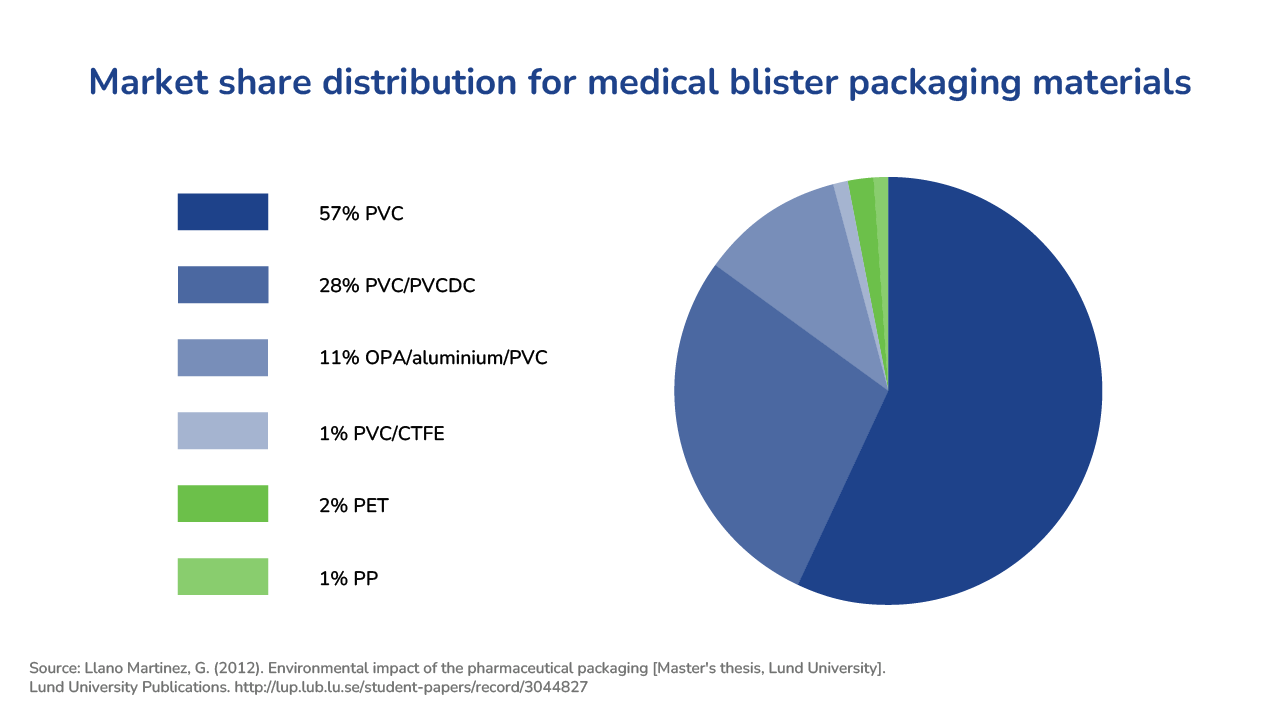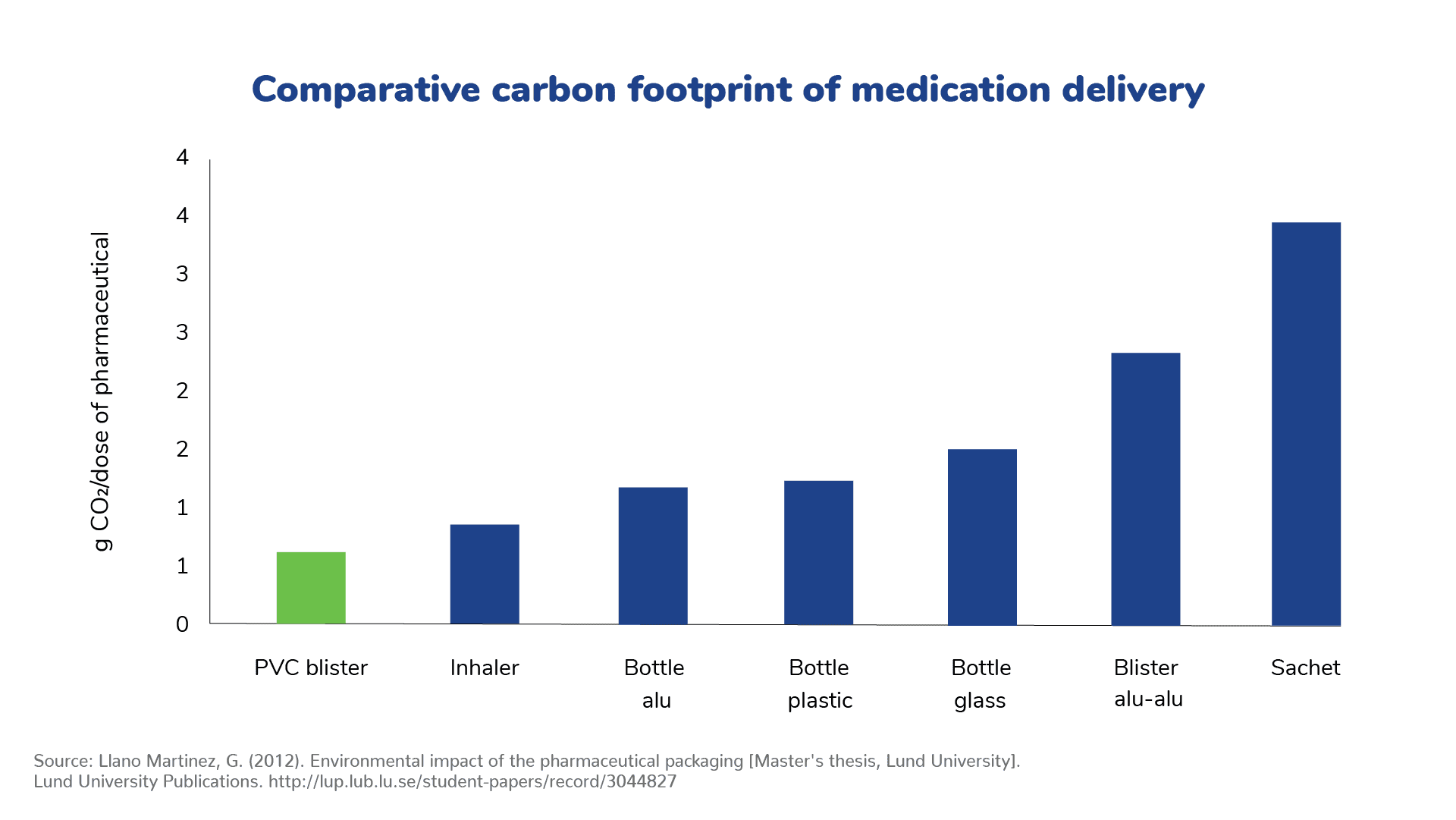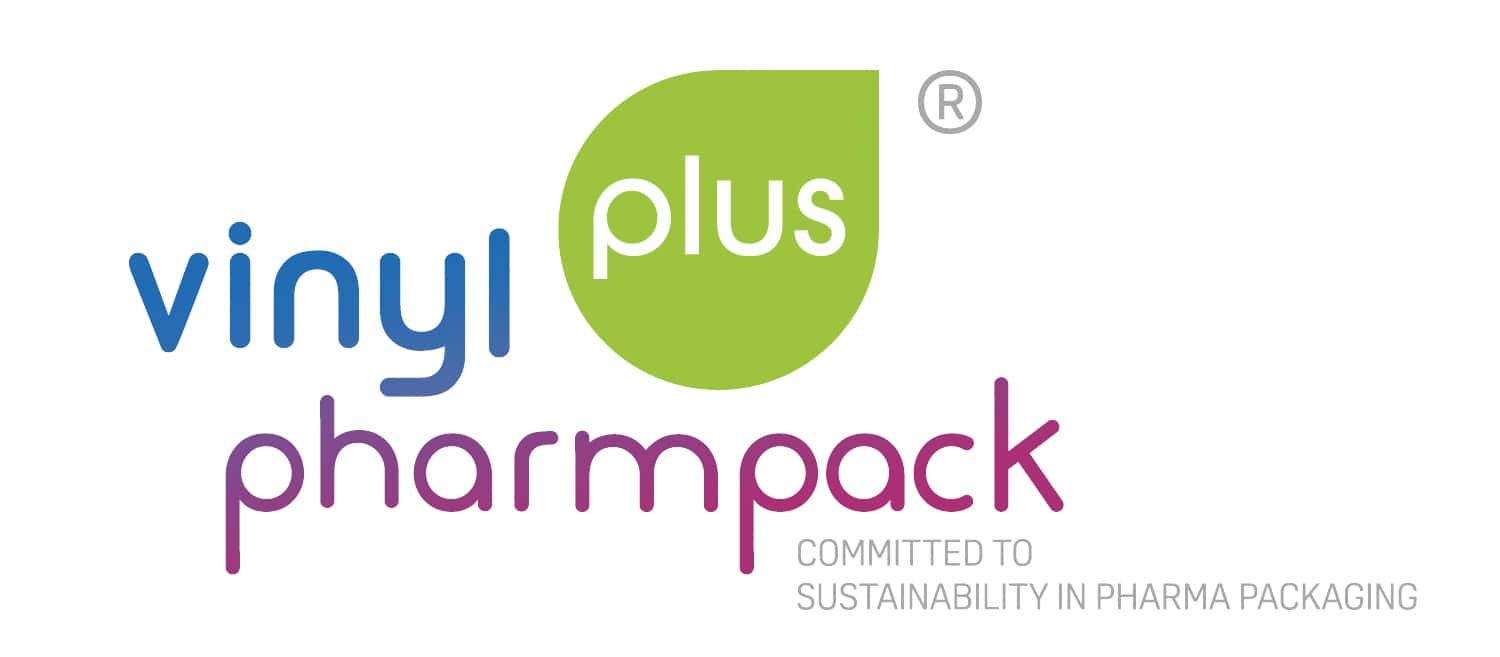The critical role of packaging in the pharmaceutical industry cannot be overstated. It safeguards the integrity of medicines, ensures their safe delivery to patients, and significantly impacts their shelf life. In Europe, blister packaging is preferred, with rigid PVC (polyvinyl chloride) as the most used material.
Why PVC-based packaging dominates the pharmaceutical sector
PVC alone or in combination with polyvinylidene chloride (PVDC), aluminium, chlorotrifluoroethylene (CTFE), or oriented polyamide nylon (OPA) holds a market share of almost 100% in medical blister packaging. There are several reasons for this dominance:
Low permability
High safety
Excellent thermoformability
Compatibility with other materials
Cost-efficiency
Recyclability
Climate benefits of PVC blister packaging for medication delivery
Medication delivery differs between the regions of the world. In Europe, for instance, around 80% of all pharmaceutical oral solid dosages are delivered in blister packs, whereas bottles are preferred in the United States. It is well established that blister packaging offer several benefits in terms of contamination avoidance, correct dosing, improved child safety and senior friendliness. When choosing PVC as the base material for blisters, the climate also benefits. Studies show PVC has a low carbon footprint compared to alternatives:
- Llano Martinez (2012) finds that PVC blisters has the lowest climate impact compared to alu/alu blisters, aluminium bottles, glass bottles, plastic bottles, inhalers, and satchets.
- The climate impact of satchets is almost 4x higher than PVC.
- Pedrosa de Oliveira et al. (2021) finds that "aluminum is more harmful to the environment than PVC, due to the high emission of CO₂ during its production."
- In their life cycle assessment of three types of pharmaceutical packaging (blisters, bottles, and satchets) for four different medications, Bassani et al. (2022) finds that "PVC is the forming film that presented the lowest environmental impacts, followed by PVC/PVDC and OPA/Alu/PVC."
- For bottles, HDPE bottles with PP caps and brown glass bottles with PP caps are chosen. For satchets, paper/alu/PE and alu/resin are chosen.
- In all four scenarios, PVC-based solutions have the least impact on global warming, abiotic depletion, acidification, ozone depletion, and eutrophication.
PVC blister packaging in a circular economy
VinylPlus® Pharmpack is a collaborative initiative dedicated to sustainable PVC pharmaceutical blister development. Spearheaded by VinylPlus in conjunction with PVC film manufacturers, this joint project aims to enhance the eco-friendliness of PVC pharma blisters. Recycling partners play a pivotal role in ensuring the responsible recycling of these materials.
Additionally, VinylPlus is actively exploring innovative recycling technologies, such as chemical recycling and physical recycling with solvent processes, as part of its commitment to advancing sustainable solutions. Through these efforts, the project contributes to a more sustainable future while supporting industries like construction and metal production.
PVC has the lowest cost per dose of medicine
PVC blister packaging, made from cost-efficient PVC resin, offers the lowest cost per dose of medicine. In contrast, solutions predominantly using aluminium, such as OPA/aluminium/PVC, are nearly three times more expensive than packaging made entirely from PVC.





